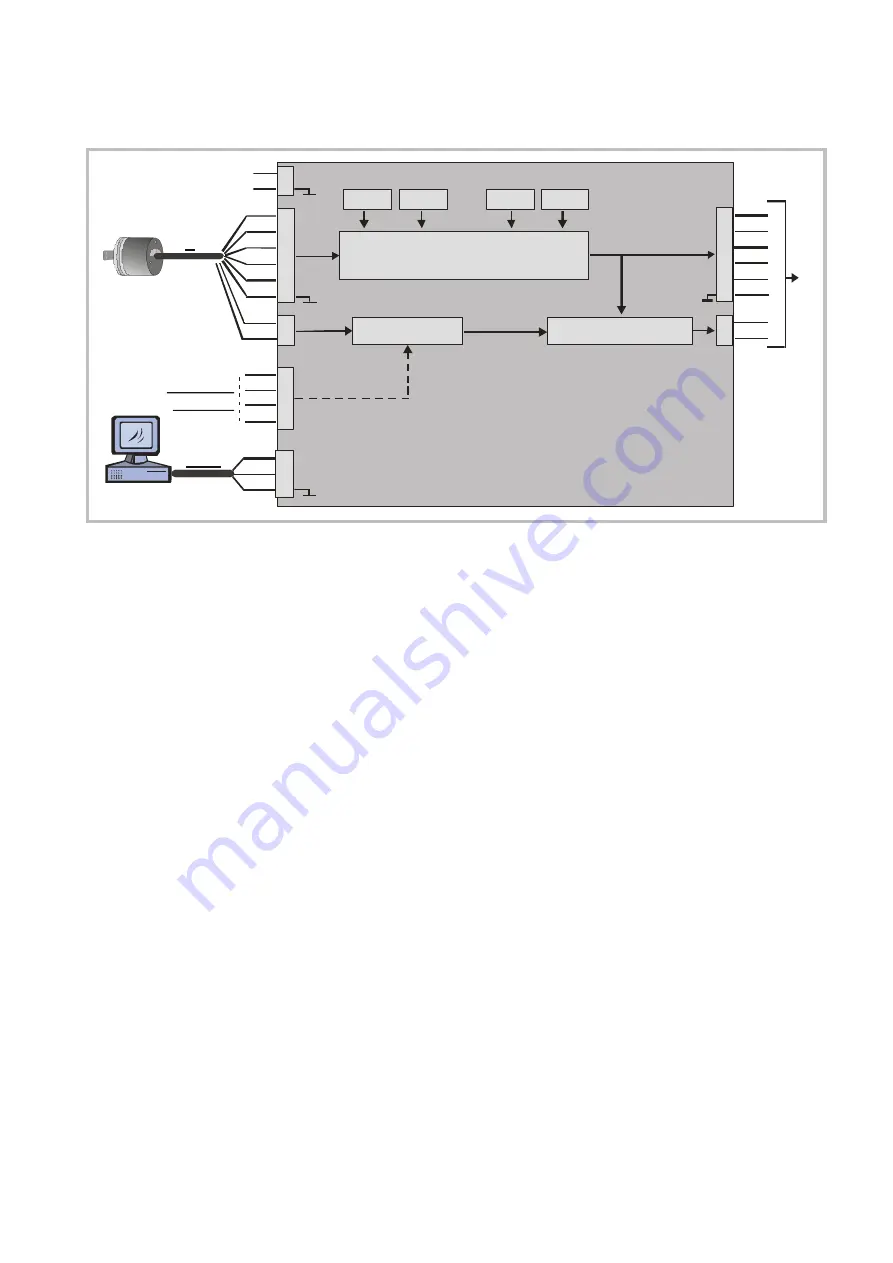
FM26001c_e.doc / Nov-11
Page 8 / 27
3.1. Block Diagram
RxD
T xD
G ND
RS232
1 6
1 4
1 5
Cont1
Cont2
Reset, Trim,
F reeze etc.
11
Cont3
Cont4
1 2
1 3
2 5
+5,2
-
A
/A
B
/B
In
4
5
7
3
8
6
9
10
Z
/Z
Com +
-
A
/A
B
/B
18
19
21
17
22
20
23
24
Z
/Z
Marker pulse generator
G ate Function
2
1
Powersupply
11 -30 VDC
Impulse Processing
Trim +
Trim -
Factor 2
Factor 1
Sync. pulse
Out
3.2. Power Supply
The units require a DC supply from 11 to 30 volts which must be applied to terminals 1 and 2.
Depending on the input voltage level and internal states, the power consumption may vary and lies in
a range of about 65 mA with a 24 volts input (plus encoder currents taken from the auxiliary voltage
output).
3.3. Auxiliary Encoder Supply Output
Terminals 3 and 4 provide an auxiliary output of +5.2 VDC / 200 mA for supply of encoders and
sensors.
3.4. Impulse Inputs for Encoders and Sensors
The setup menu of the unit allows individual setting of the desired characteristics of the signal
inputs. According to the application the units will accept single-channel signals (input A only with no
direction information) as well as dual channel signals A/B including information of the direction of
rotation. The following input formats and levels are acceptable:
symmetric differential input with RS422 format or TTL inputs A, /A, B, /B
asymmetric (single-ended) TTL levels (A and/or B only without inverted channels)
HTL level 10 – 30 volts, alternatively differential (A, /A, B, /B) or single-ended
(A and B only, without inverted channels)
Signals from proximity switches or photocells providing HTL level (10-30 V)
NAMUR (2-wire) signals
The maximum input frequency of the unit is specified to 1 MHz.
The use of the marker pulse inputs Z, /Z is optional.









































